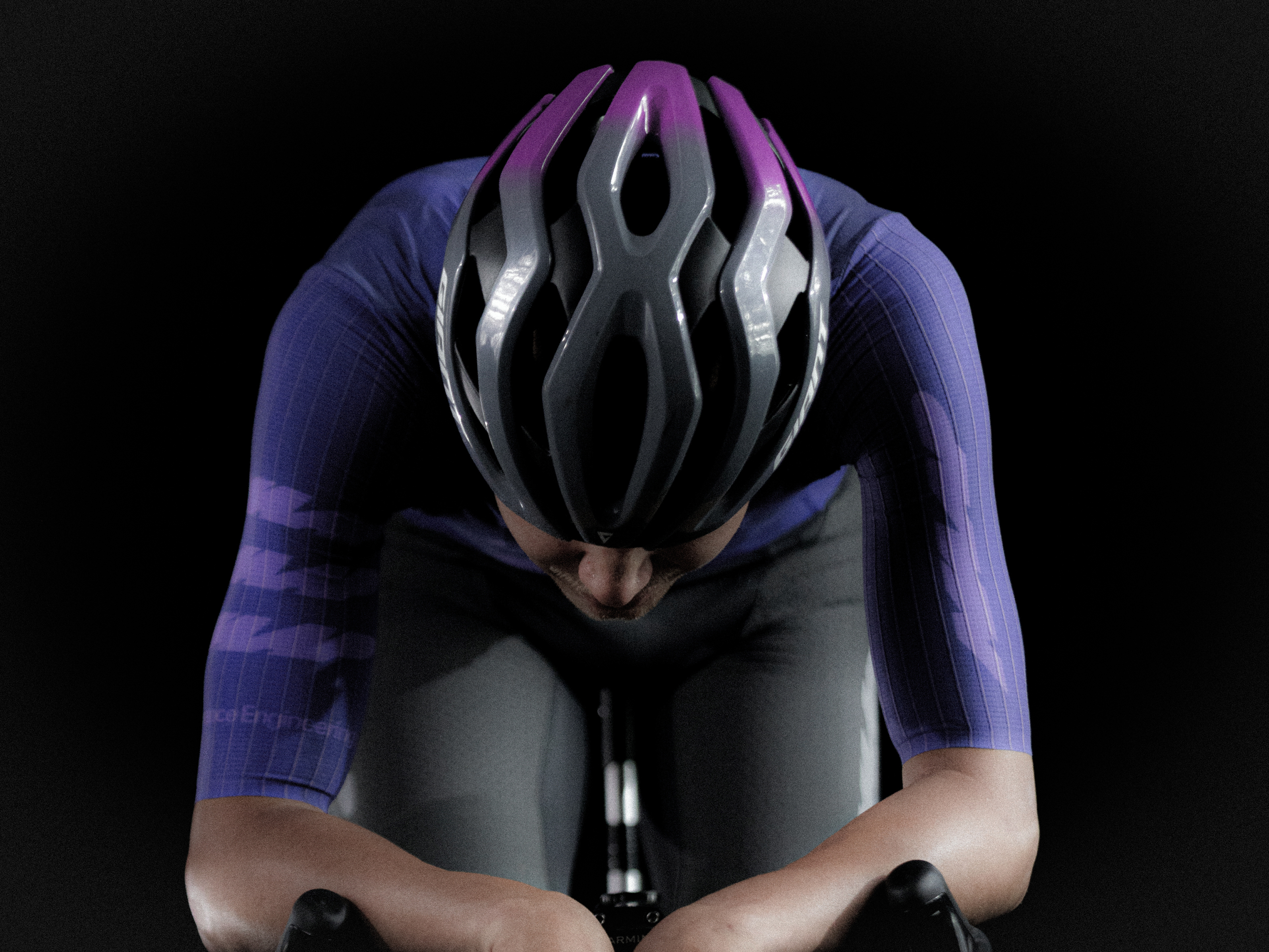The new MAAP Pro Aero jersey has been worn by Jayco AlUla riders for most of the year, notching up multiple WorldTour wins, including stage wins at the Tour de France and Giro d’Italia. MAAP has finally shared what makes this piece of kit so special – the fabric. So what’s all the fuss about and is it a contender for the best cycling jersey crown?
The big news is that casual riders can now also benefit from the jersey’s three core design principles: speed, thermoregulation, and comfort. And while the latter two can be quantified without the need for scientific benchmarking, aerodynamics needs to be validated under strict protocols in a wind tunnel.
And that’s precisely where MAAP headed, together with Luke Plapp, honing the AARTERO Flyte proprietary aero fabric through a relentless testing regime. The aerodynamic gains stem from 3D-ribbed sleeve channels that smooth turbulent airflow and reduce air separation across the arms and shoulders, two areas known to impact aerodynamics. Testing showed savings of 6–8 watts over 100km, which equates to up to a 60-second saving without additional effort.
(Image credit: Getty Images)
In an interview following the press presentation, Jayco AlUla rider and Australian national time trial champion Luke Plapp explained how the jersey differs from others he has worn in the past and how he collaborated closely with MAAP to develop it, allowing it to perform as it does.
“Other manufacturers design kits that work at certain speeds, which deteriorate when out of that specific speed band. The MAAP Aero Jersey works well across all speeds.”
“I spent more time in the tunnel than anyone else in the team. The tunnel is all about finding what makes the fastest kit, and I think the biggest example of this is the riders in the team wearing the new Pro Aero Jersey in virtually every race we participated in this year.”
“Even on the cold days, we would put thermal base layers on or other garments underneath to ensure we could still have this fabric as the outermost layer.”

(Image credit: MAAP)
Before the final iteration was approved for use, sixteen prototypes were created, tested, and refined – focusing on fit, comfort, and thermoregulation. The result culminated in an ultra-thin 20-micron fibre matrix construction weighing 100 g/m². Long-term durability was also a focus for this project, and the Jacquard weaving has proved to be resilient to degradation, delamination, and abrasion.
“We have a lot of kit to use throughout the season, but I trained with the Aero Pro jersey and race suit and have done close to 30,000-40,000 km this year between seven kits – and that’s got me through the whole season,” said Plapp. “We have found the fabric provides extra protection in crashes, too, and we don’t have as much road rash as we did with other kits. When it comes to aero, old or new kits, washed or not, we can’t notice any difference in performance in the wind tunnel.”
The jersey is unique in that it was developed to work as an individual garment with no need for a baselayer to improve aerodynamics. MAAP appears to have got the balance right, as baselayers or jerseys with special tripping fabric can adversely impact ventilation.
“From the testing we did, there were no gains found in wearing ‘trips’ under the Pro Aero Jersey,” said Plapp. “It seems that you can either use trips on the outer fabric to achieve the aero gains or use a simple plain fabric on the outer and trips underneath to achieve similar results, but this, of course, then has implications when it comes to thermoregulation.”

(Image credit: Getty Images)
The Aero Pro jersey is not discipline-specific either and can be used across gravel riding, cross-country mountain biking, and road cycling. The fabric is super-stretchy – almost mesh-like in design, so it fits snugly without affecting comfort. As per traditional cycling jersey design, the jersey is fully functional. There are three pockets on the back, which can be used to hold anything from tools to bars without issue.
Is the Aero Pro jersey in commercial form any different from what the consumer will get? Well, the Jayco AlUla team uses a base range of sizes and does a fitting session to customise specific attributes. Luke Plapp, for example, added 2cm to his sleeves and a bit of length to his legs to suit his preferences. The general consumer won’t be able to tweak these elements, but the fit will be form-hugging and comfortable.
Moving forward, MAAP will also be adding a top-to-bottom Pro Aero speeduit using the same AARTERO Flyte fabric. In terms of ancillary kit, there will be a direct correlation in speed technology across all fabric touch points from the gloves and socks through to the sleeves.
The Pro Aero Jersey is available from maap.cc or MAAP retailers for £210 / $265 / €220 / $345 AUD.
Explore More
